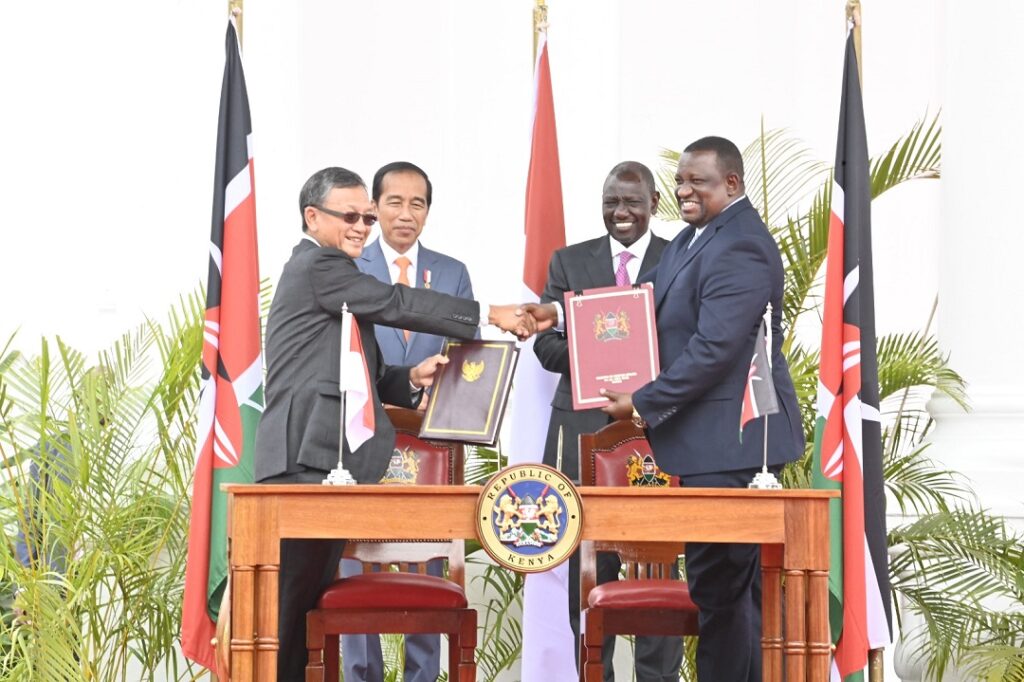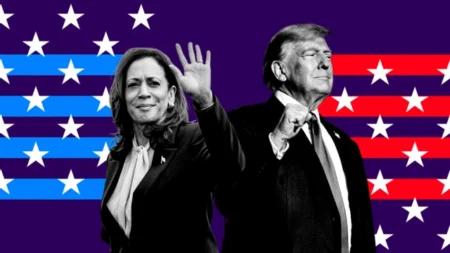- Investment and trade between the two countries was valued at more than $600 million last year.
- Kenya’s exports last year increased to $7.9 million from $6.3 million in 2021, the country’s Economic Survey 2023 indicates.
- Imports from Indonesia were valued at $187.7 million having dropped from $307.5 million the previous year.
Kenya is now keen to increase trade volumes mainly exports to the Asean market, with its renewed ties with Indonesia. President William Ruto said investment scope will also be broadened to bring about a balance of trade that is currently in favour of the Southeast Asian country.
“We will seize our energies and create the necessary environment for increased trade between our countries,” President Ruto said on Monday.
Investment and trade between the two countries was valued at more than $600 million last year. Indonesian economy registered a growth of 5.3 per cent in 2022 compared to of 3.7 per cent in 2021 mainly due to favourable external trade supported by global prices for commodities such as coal and palm oil and buoyant capital inflows.
Indonesia’s inflation rose from 1.6 per cent in 2021 to 4.2 per cent in 2022 due to rise in commodity prices. The country’s current account surplus as a percentage of GDP improved from 0.3 per cent in 2021 to 1.0 per cent in 2022, owing to increased prices of exports, especially coal, palm oil and nickel.
Read also: Kenya’s strategy in capturing more Asian investments
Trade volumes
While trade volumes are currently in favour of Indonesia, the value of Kenya’s exports last year increased to $7.9 million from $6.3 million in 2021 according to Economic Survey 2023.
Imports from Indonesia were valued at $187.7 million having dropped from $307.5 million the previous year. The main products that Kenya exports to Indonesia include coffee, tea tanned sheep hides, mate and spices among others.
Key imports from Indonesia include palm oil, vegetable fats and oils, paper and paperboard, articles of pulp, iron and steel, electrical and electric equipment, plastics among others.
Areas of focus
According to Dr Ruto, the high-yielding areas of focus include textiles and apparel, energy, mining, and oil production and refining. He spoke at State House, Nairobi, during a bilateral meeting with the President of Indonesia Joko Widodo on his state visit to Kenya. The two leaders also jointly addressed the media.
He said Kenya will be seeking the support of Indonesia to penetrate the Association of Southeast Asian Nations, a fast‑growing bloc in Asia.
Asean is made up of Brunei, Burma, Cambodia, Indonesia, Laos, Malaysia, Philippines, Singapore, Thailand, and Vietnam. Together, they represent a market with a GDP of over $2.9 trillion and a population of 647 million. Kenya and Indonesia are working on a preferential trade deal to be concluded in 90 days.
Inflows to Kenya
President Ruto said Kenya will also work with Indonesia to attract global firms to invest in value addition chains. The move, he said, will help Kenya grow its industries and attain a trade balance with Indonesia with textiles and apparel, energy, mining, oil production and refining sectors in focus. “These sectors will grow our bilateral investment portfolio and contribute to increased trade,” Dr Ruto said.
The President argued that the government is particularly eager to facilitate Indonesian firms to invest in edible oil processing. “Indonesia’s investment will support the government’s efforts to ensure affordable and accessible edible oil for the majority of the Kenyan people, especially in rural areas,” he said.
Kenya has since given Indonesian passport holders visa-free access. President Widodo pledged to work with Kenya for their shared prosperity, saying his country was keen to ensure the partnership with Kenya was beneficial to the people.
China remains king
While Kenya is keen to grow trade ties with other countries and trade blocs, China remains king mainly as the top source of imports for the East Africa’s economic powerhouse which is a net importer. This, as the country’s trade deficit continues to widen despite increased exports.
China remained Kenya’s biggest import source with the country importing goods worth $3.1 billion last year, up from $3 billion in 2021. UAE toppled India, which has been the second top source in recent years, mainly as a result of high petroleum imports. Imports from the two countries were valued at $2.8 billion and $1.6 billion, respectively.
The new government is keen to increase exports in the medium-term, mainly riding on trade deals currently under negotiation, and renewed bilateral ties with key allies.
Africa remains the biggest export market for Kenya with goods worth $2.5 billion sold within the continent last year, as East African Community accounted for majority of the volumes. It was followed by Asia, Europe, Middle East then the US.
Read also: Kenya’s Lamu Port, AfCFTA and China’s BRI
Trade deficit
Kenya’s expenditure on merchandise imports rose by 17.5 per cent to $ 17.3 billion as the country’s trade deficit hit a new high last year.
According to the Kenya National Bureau of Statistics, there was an increase in expenditure on imports mainly due to increased international prices of petroleum products amid the continued weakening of the Kenyan shilling against major currencies.
Earnings from exports grew by 17.4 per cent to $6 billion in 2022, the Economic Survey 2023 indicates. The growth in total exports was however not sufficient to offset the growth in imports, resulting to the widening of the balance of trade deficit to $11.2 billion. This was up from $9.8 billion in 2021.
Apart from petroleum imports, Kenya also spent heavily on importing machinery, iron and steel, fats and oils and plastic articles.
Read Also: Deepening Kenya-US trade ties start paying huge dividends
Trade deals
Kenya is pushing for a strategic trade pact with the US, a deal that is expected to shield the country in the event that the US Congress chooses not to renew the African Growth and Opportunity Act (AGOA).
The act which gives countries in the sub-Saharan Africa duty- and quota-free access to the American market, expires in 2025.
The United States Trade Representative Katherine Tai, who was in Nairobi last month, indicated the US negotiators do not have a deadline for concluding talks or signing the proposed US-Kenya Strategic Trade and Investment Partnership (STIP).
“Our focus right now is on substance as opposed to setting an actual deadline,” Ms Tai said in a media briefing in Nairobi.
The pact is expected to help Kenya tap at least five per cent of the US market, which has the potential to earn the country more than $13.9 billion in export revenues annually.
The US is the largest export destination of Kenya’s apparel, accounting for over 90 per cent of garment exports every year.
Meanwhile, Kenya has signed an Economic Partnership Agreement with the European Union, a post Brexit deal that will guarantee duty-free access for its farm produce into its biggest export market.
European goods entering Kenya will see tariffs reduced over a 25-year period under the agreement. The deal took seven months to negotiate, making it one of the fastest the EU has ever struck.











